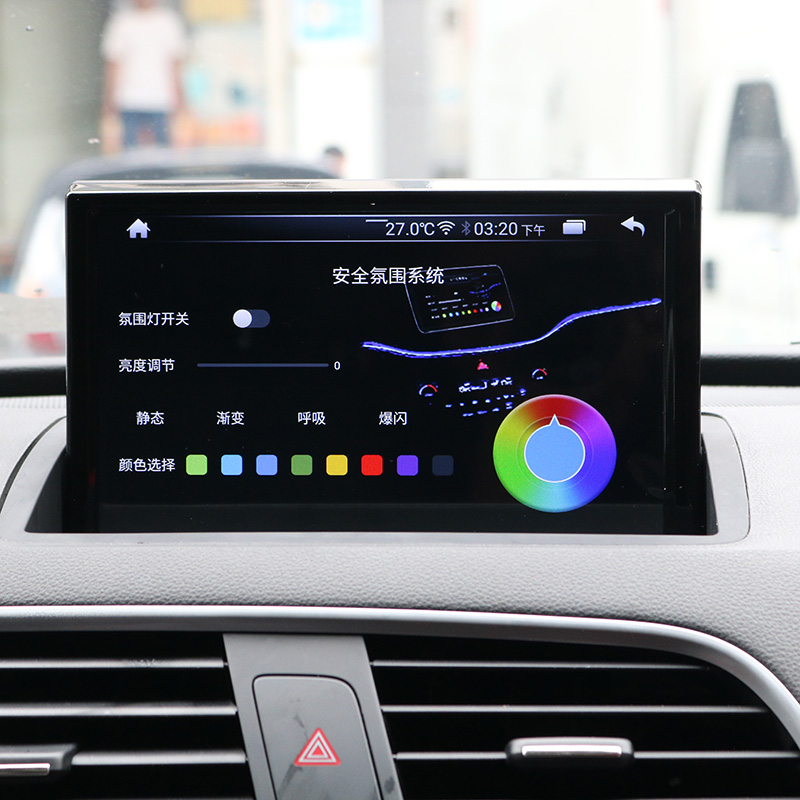The sound system, like the car itself, symbolizes upward mobility, social belonging and cultural identity.
Car stereos have never been more convenient when we can play millions of songs through our speakers on our morning commute. It has come a long way in absorbing and spreading the meaning of the ever-evolving car and its capabilities. As technical analyst David Z. Morris explains, the car appears in “a world where the struggle of voices is expressed in concrete terms in terms of class and power … The combination of car and voice creates a new field of struggle in this matrix. Meaning”.
The luxury of a “home” audio system in a car has been a dream for many years. Car radios started out as a luxury. Morris wrote that they relied on bulky, easily damaged, and expensive vacuum tubes, “often restricting car stereos to a small privileged class.” Even if they are readily available, not everyone is enthusiastic about this idea.
The British commentator W. R. Anderson, writing in 1935, was certainly unimpressed. During a visit to the US, he lamented the popularity of car radios: “This is really important in a country where car speeds are higher than here (UK), cars are more powerful and require constant attention. There are about 2 million car radios in the US.” Although there are more home radios in England overall, Anderson notes with relief that “car radios are not in our favor, to our credit.”
Those with more technical problems also saw the problem. “High-quality receivers have no place in the automotive industry at this time,” wrote radio engineer Virgil M. Graham in 1934. The sound is bad and the receivers are too big, any attempt to reduce them will only lead to problems. That doesn’t mean they haven’t tried, Morris notes. In the 1930s, designers experimented with “cold tubes” to make car radios more practical, and in 1947, Bell Labs created the transistor, a lighter, more durable alternative to vacuum tubes. On top of that, “transistors can be produced at extremely low cost using a highly automated process.” Car radios were an accessory for only 40 percent of cars in 1946, but by the 1970s they were in 90 percent of cars.
In 1956, Chrysler was the first to invent the car player for home comfort in the car. An anonymous author explained in Passenger Car Magazine that “Highway Hi-Fi” “mounts right under the center of the dash and plays through the car radio speakers.” There’s also an 8-track player, a cassette tape, and Oldsmobile “Sportable”/”Transportable”, a transistor car radio that “can be removed from the dash by releasing a lever in the glove box. Remove This compact radio can then be used as a battery powered portable radio with up to 50 hours of playback time.”
Privacy Policy Contact Us You can unsubscribe at any time by clicking on the link provided in any marketing communication.
However, car stereos are not just a way to listen to the hits of the day. In post-war America, the radio was also “received as a personal accessory for business people,” Morris explained. These business travelers are mostly male, which extends to the home hi-fi culture “where sound quality is exponential.” But as car stereos become more affordable and their users more diverse, ideas about what quality sound means are changing. From the roaring engine of hot rod culture, to 1950s teenagers taking over the space with loud radios, to today’s sound systems with rumbling basses and decibel drag racing (sound levels ranging from 177 to 182 decibels in racing), “car stereos are known with its individuality. work consistently, counterculturally,” Morris explained.
noise? May be. But, as Morris points out, “in post-revolutionary France, there was a fierce battle for village bells.” Sound has always been a contentious issue. Affordable in-car audio has created a new group of people who are “discovering new ways to use technology while taking up space and challenging the middle-class ‘norm’.”
JSTOR is a digital library for scientists, researchers and students. Readers of JSTOR Daily have free access to original research on our JSTOR articles.
Privacy Policy Contact Us You can unsubscribe at any time by clicking on the link provided in any marketing communication.
JSTOR Daily uses a fellowship at JSTOR (Digital Library of Scientific Journals, Books and Other Materials) to provide context for current events. We publish articles based on peer-reviewed research and provide all readers with free access to this research.
JSTOR is part of ITHAKA, a non-profit organization that helps academia use digital technologies to preserve academic records and promote sustainable research and teaching.
© Ithaca. All rights reserved. JSTOR®, the JSTOR logo and ITHAKA® are registered trademarks of ITHAKA.
Privacy Policy Contact Us You can unsubscribe at any time by clicking on the link provided in any marketing communication.
Post time: Sep-27-2022

